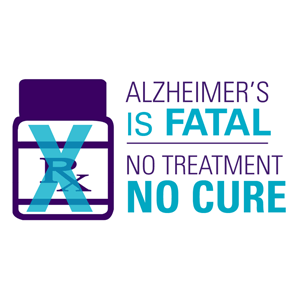Facts & Stats

Prevalence
Every 67 seconds, someone in America develops Alzheimer’s. It is estimated that nearly 500,000 new cases of Alzheimer’s disease will be diagnosed this year. Get the facts about Alzheimer’s disease — the most common form of dementia.

The number of Americans with Alzheimer’s disease and other dementias will grow each year as the size and proportion of the U.S. population age 65 and older continue to increase. By 2025, the number of people age 65 and older with Alzheimer’s disease is estimated to reach 7.1 million — a 40 percent increase from the 5.1 million age 65 and older affected in 2015. By 2050, the number of people age 65 and older with Alzheimer’s disease may nearly triple, from 5.1 million to a projected 13.8 million, barring the development of medical breakthroughs to prevent or cure the disease.
Mortality
In 2015, an estimated 700,000 people in the United States age 65 and older will die with Alzheimer’s. As the population of the United States ages, Alzheimer’s is becoming a more common cause of death. Although deaths from other major causes have decreased significantly, official records indicate that deaths from Alzheimer’s disease have increased significantly.

Between 2000 and 2013, deaths attributed to Alzheimer’s disease increased 71 percent, while those attributed to the number one cause of death—heart disease—decreased 14 percent. Alzheimer’s is the only disease among the top 10 causes of death in America that cannot be prevented, cured or even slowed.
Impact on Caregivers
In 2014, friends and family of people with Alzheimer’s and other dementias provided an estimated 17.9 billion hours of unpaid care, a contribution to the nation valued at $217.7 billion. This is approximately 46 percent of the net value of Walmart sales in 2013 and nearly eight times the total revenue of McDonald’s in 2013.

Alzheimer’s takes a devastating toll on caregivers. Nearly 60 percent of Alzheimer’s and dementia caregivers rate the emotional stress of caregiving as high or very high; about 40 percent suffer from depression. Due to the physical and emotional toll of caregiving, Alzheimer’s and dementia caregivers had $9.7 billion in additional health care costs of their own in 2014.
Cost to Nation
Alzheimer’s disease is the most expensive disease in America today.

Unless something is done, in 2050, Alzheimer’s is projected to cost over $1.1 trillion (in 2015 dollars). This dramatic rise includes a five-fold increase in government spending under Medicare and Medicaid and a nearly five-fold increase in out-of pocket spending.
Sources:
Hebert LE, Weuve J, Scherr PA, Evans DA. Alzheimer’s disease in the United States (2010-2050) estimated using the 2010 Census. Neurology. Available at www.neurology.org/content/early/2013/02/06/WNL.0b013e31828726f5.abstract. Published online before print, Feb. 6, 2013.
Hirtz D, Thurman DJ,Gwinn‐Hardy K, Mohamed M, Chaudhuri AR, Zalutsky R.How common are the “common” neurologic disorders?Neurology 2007;68:326‐37.
World Alzheimer Report 2015 the Global Impact Of Dementia An Analysis Of Prevalence, Incidence, Cost and Trends, p.7 http://www.alz.co.uk/research/WorldAlzheimerReport2015.pdf, and World Alzheimer Report 2015 the Global Impact Of Dementia An Analysis Of Prevalence, Incidence, Cost and Trends Summary Sheet, p.1 http://www.alz.co.uk/research/WorldAlzheimerReport2015-sheet.pdf
Alzheimer’sDisease International World Alzheimer Report 2010: The Global Economic Impact of Dementia: Executive Summary,” Prof Anders Wimo, Karolinska Institutet, Stockholm, Sweden Prof Martin Prince, Institute of Psychiatry, King’s College London,UK. Published by Alzheimer’sDisease International (ADI) 21 September 2010